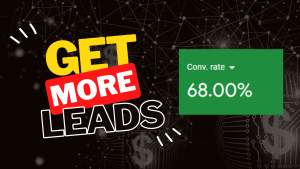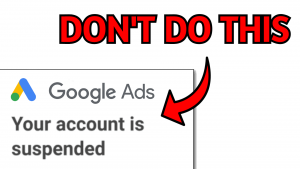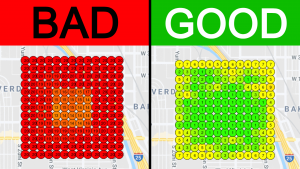Portfolio bid strategy is an automated, goal-driven bid strategy that groups together multiple campaigns, ad groups and keywords.
Previously known as flexible bid strategy, it automatically sets bids to help you reach your performance goals.
They include the following Smart bidding strategies: Target CPA, Target ROAS, Maximise conversions, Maximise conversion value, Maximise clicks and Target impression share.
Once you create a portfolio strategy, it will be stored in your Shared library. This is the central location for managing your portfolio bid strategies and tracking their performance.
Portfolio Bid Strategy (Video Guide)
What is Portfolio Bid Strategy and Why do you need it?
If you’re unfamiliar with Google’s numerous options for bidding on advertisements, it’s a good idea to brush up on some of the fundamentals. A bidding strategy is how Google will allocate your advertising spend based on your campaign objectives.
When creating advertising with Google, customers can choose several ways to bid on their ads based on what goals are most important to their organisation.
Assume you have an internet business where you sell things. You almost certainly want more customers to visit your store in order to enhance your sales. Perhaps you run an online community and are searching for a strategy to improve the number of people who participate.
Manual bidding vs. automated bidding
Manual bidding is when you manage your keyword bidding on your own within the advertising platform. Manual bidding typically relies on people making decisions based on their own advertising expertise or studies of previous campaigns.
Automated bidding is a Google Ads bid approach that aims to maximise outcomes depending on your campaign objectives. Google uses automated bidding to create bid amounts based on the likelihood that your ad will result in a click or conversion, and it handles the bulk of the effort of setting bids while you try to meet your performance targets. Automated bid methods learn as they go, using data from previous bids to inform future bids.
Why use portfolio bid strategy?
Portfolio bid techniques were created to assist advertisers in better understanding their bid efforts. Portfolio bid techniques are used to optimise certain goals across several campaigns, ad groups, and keywords.
When these strategies are generated, they are shared across your account so that they are all in one place. This one-stop shop also makes it easier to track the progress of your efforts.
Benefits of using portfolio bid strategy
Because bids are automatically set, you will save time by not having to manually specify bid amounts for ad groups or individual keywords. This allows you to spend more time on high-level strategy and less time on mundane tasks.
Machine learning is used in portfolio bid techniques to evaluate performance over time and optimise for your unique goal. It is unlikely that manual bidding could attain the same accuracy and consistency because it updates bids on a regular basis to guarantee that your offers are always optimal for the target you have selected. Finally, based on your selected target, you should see more conversions or clicks for your adverts.
When To Test Google Ads Portfolio Bidding
Campaigns Divided by Location
This was one of the first circumstances I tried out portfolio bidding in. Campaigns for one brand were separated by region, including the business’s home state and other high-value locales. This allows the firm to spend more money on its nearest audience while also slightly tweaking ads for those who live further away.
The underlying purpose and subject of both campaigns inspired the test.
Audience-Specific Campaigns
We anticipate that remarketing audiences will perform better, which we can leverage in a single strategy. If you have the resources, you can employ a Target CPA or Target ROAS strategy to offset more expensive conversions from the retargeting population at the top of the funnel.
Campaigns Divided by Match Type
While I’ve moved away from segmenting campaigns by match type, it still makes sense in some cases or if restructuring isn’t a priority. Using portfolio bidding, you will be able to combine those campaigns in terms of bidding.
Campaigns Organized by Theme
On an account with insurance-related keywords segmented at the campaign level, I’m now exploring portfolio bidding. These initiatives have a lower volume, and by combining them for bidding, we are more likely to see greater success as more data is sent into the algorithm.
Campaigns using Shared Funding
You should be able to let Google allocate expenditure totally depending on results by defining a shared budget across a portfolio of ads. I’ve started testing this with mixed results, but it could be an alternative, especially for low-budget campaigns. Allow demand to determine where you spend your money rather than the daily budget limit.
Need A Google Ads Specialist To Help With Your Campaign?
Feeling like you’re in over your head when it comes to Google Ads? At Savvy Digital, we’re experts in managing/optimizing Google Ads and are here to help you achieve the best possible results from every campaign. Contact Savvy Digital to get started with Google Ads setup today, or book in a FREE Google Ads audit.




























